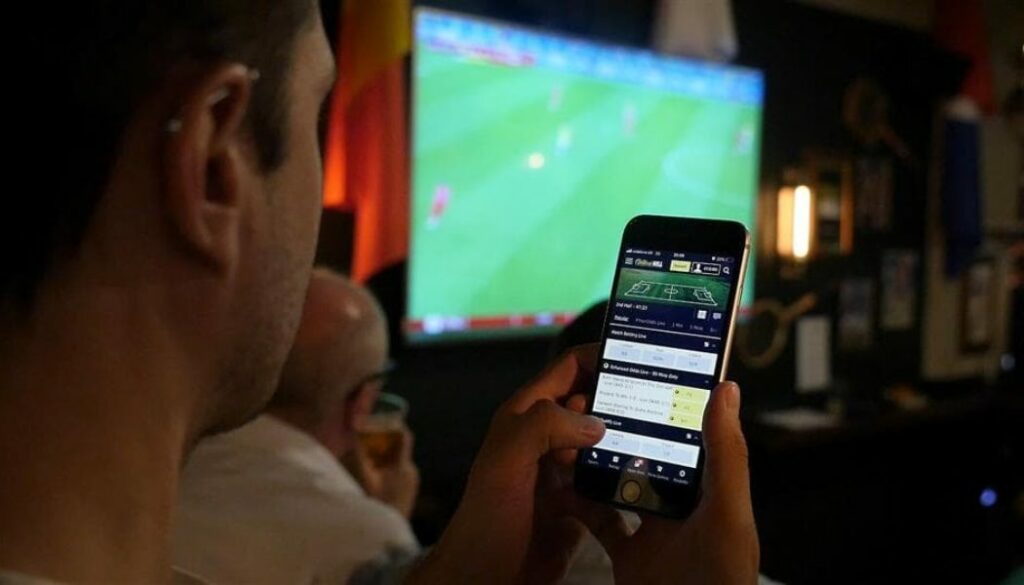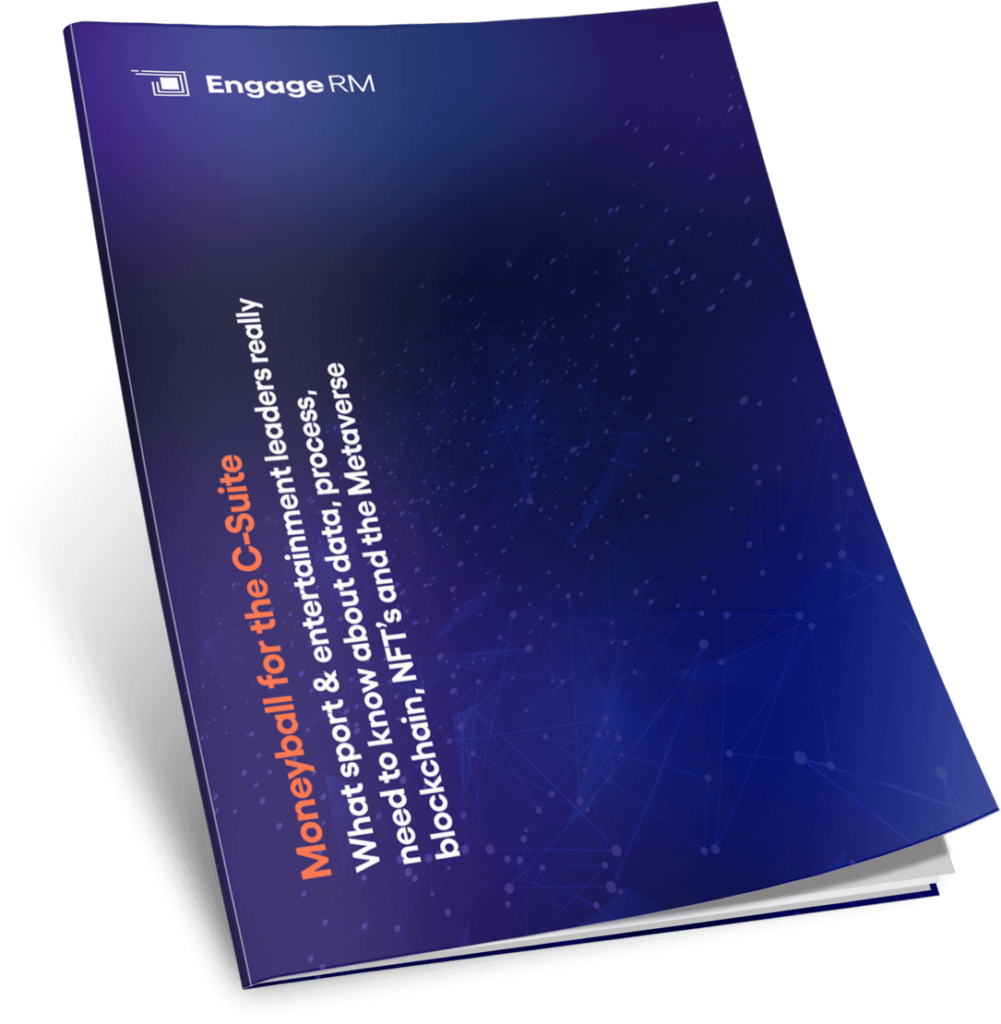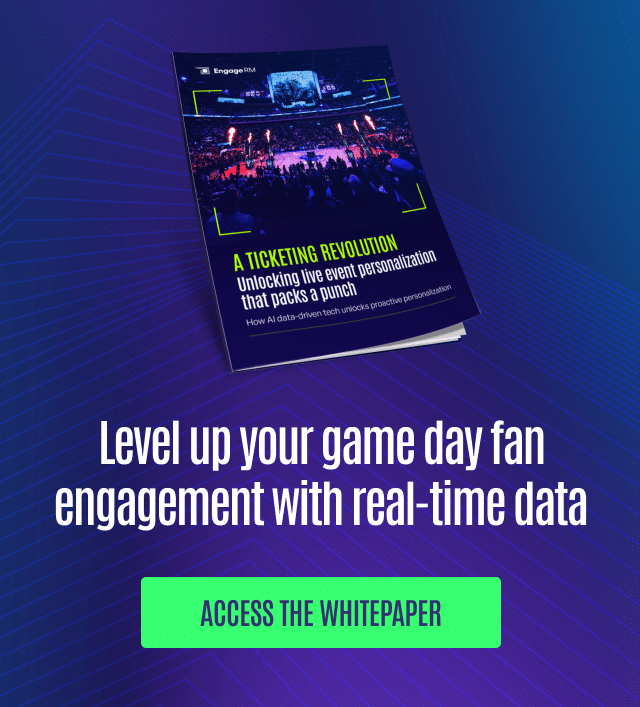Crossing the divide: How digital fragmentation is changing sports
15 June 2023
A couple of weeks ago, I was sitting in front of the TV watching my beloved Richmond Tigers play against the Essendon Bombers in the Aussie Rules Football. Now, the Tigers had come off a great win the week before, their season was on a knife’s edge, and a win here was crucial.
At the beginning of the final quarter, things were looking promising. We were up by 20 points, a comfortable but by no means safe lead. Then Essendon’s charge began, and I sat there watching as the lead shrunk from 20 points to 5 with 3 minutes remaining.
Now I did what any nerve rattled fan would do, and said, “I can’t watch this anymore!” burying my head in a pillow hoping to wait out the game.
However, 3 minutes is an eternity when you shut your eyes and hope for the best, so the pillow tactic was dropped pretty quickly. I needed something else to capture my attention.
So out came my phone.
I flicked through Instagram and TikTok, but neither caught my attention. Twitter was my final option, and with tweets flying left right and center about the game, it provided me with the solace I needed during those final minutes.
It didn’t distract me enough though, because I watched an Essendon player kick a goal in the dying seconds, causing my team to lose by one point.
Digital Fragmentation 101
We’re well into the digital age, and that is drastically affecting our viewing habits.
Who can say, hand on heart, that when they turn on a game it has their full, undivided attention from start to finish? How often do you reach for your phone, tablet or laptop?
If your answer was you don’t, I’d beg to differ.
In a moment of panic whilst watching my team slowly lose, I turned to my phone to try and ease my nerves. When I’m watching an F1 race, you best believe I’m on Twitter looking at memes and comments about the race unfolding on my laptop in front of me.
The point is our gaze is no longer fixed on the TV screen anymore and it’s been that way for a while now.
This is digital fragmentation.

Our options for consuming sports content span multiple devices (TV, phone, laptop) and platforms (social media apps, streaming services), allowing fans to tailor their viewing patterns.
5.8 billion people across the globe use the internet, 4.8 billion are active on social media and in 2023, it’s estimated the average person has 3.6 devices. In other words, at any one time there are at least 3 screens all trying to catch our attention.
Our brains (and especially those of the younger generations) are now being pulled in different directions. So, baseball might be on the TV, but they’re also talking to their mates as they wait in the Fortnite lobby whilst scrolling TikTok videos at the same time.
This second (or even third) screen isn’t all that bad for sports and entertainment organizations too, let me explain.
Tapping into new Channels
In sports, you’re lucky with the audience you have. Not many brands can cause the soul-destroying heartbreak of losing by a point, only to have fans turn up at the turnstiles every week.
Fans want to engage with your brand, and you can reach them through the multiple channels they interact with.
For example, MLS partnered with Apple TV for their season pass, providing fans with access to every MLS game, original programming and exclusive vision.
Six Nations Rugby and TikTok joined forces to create a virtual hub for the event for new and existing fans. The NBA and NFL host their own streaming platforms in League Pass and Game Pass.
Or who could’ve missed the announcement of the Apple Vision Pro? Disney’s CEO Bob Iger unveiled how the headset would create a multi-sport experience. The ability to split screens and watch multiple sports simultaneously is a game changer.
Reports have confirmed fans are becoming more fragmented across streaming, apps and gaming platforms than ever before.
The point is, fans have multiple avenues to consume content, they’re not looking at just one anymore, and tapping into those habits can reap serious rewards.
Interested in more content like this? Subscribe to our newsletter 👇
Bringing in the strategy
I’m sure some alarm bells are ringing with questions about how media deals or TV advertising revenue will be impacted.
Fans aren’t completely tuned into Sunday afternoon baseball on the TV, so where else can you get their attention?
You create a multichannel strategy that reaches and engages different fan demographics.
As an example, let’s breakdown fans based on their age:
Baby Boomers
Your older fans are a little more straightforward, once the game is on screen, you’ve got their attention.
Devices are still a little unfamiliar, so they won’t be checking them out as much as others, their eyes are glued to the screen besides a few breaks here and there.
Digital fragmentation hasn’t altered this group’s viewing habits that much, however; they do love an app (who else’s parents are still playing Candy Crush?). So, enhancing your team app with incentives such as games or prizes might be a way to pull them in.
Gen Z
Now this is a completely different story. Gen Z has grown up in the digital world and milked every aspect of it. Attention spans are low, and they can be easily pulled in different directions based on what catches their eye.
Your social strategy is paramount here, so how will you plan to reach them during a game? TikTok is their platform of choice, so think about what content you can prepare in advance, but also how you’ll share live in-game moments quickly.
What level of flexibility do you provide your social team, how much creative freedom do they have? Trends come and go in the blink of an eye and many social media managers miss the boat as they’re stuck in a slow approval process (so much so that it has become a trend itself).
Simply, Gen Z want quick, consumable content across the platforms they engage with regularly on platforms like TikTok and Twitch. They’re also watching sports on their laptop (with lots of tabs open), so streaming is a big channel they utilize as well.

Millennials
With the largest market share, Millennials fit between both in age and consumption habits. Their format of choice is video, watching more hours than any other generation and they love Twitter and Instagram.
It raises different questions regarding how your organization will engage with Twitter, to stay in the action taking place in the game and incorporating video into those moments.
This could look like pre-game behind the scenes footage of players warming up, fans filling the venue, unique stories around special guests, anything to bring those outside, in. Throughout a Formula 1 race, teams are sending hundreds of tweets including pit stop updates, team radio and of course memes (shout out to the Williams rubber duck).
Now this is an age focused strategy, however it’s easy to segment this further into geographical location, background, relationships, how often they interact with your organization, whether they are a member, the list goes on.
Building those profiles will ensure your organization masters the fragmented landscape of digital content, and accurately taps into the viewing habits of fans to drive revenue.
So how much do you know about your fans? Great data and a robust CRM provide the foundation for all of these insights that give you a competitive edge. Drop us a line if you’d like to learn more.
Interested in more content like this? Subscribe to our newsletter 👇










